Forest Smiles – The Best Dentist in Lynchburg, VA
Brushing your teeth seems easy enough. But some toothbrushes are better than others and there is a right and wrong way to brush your teeth.
Brushing your teeth regularly is key to maintaining healthy teeth and gums and preventing periodontal (gum) diseases, but it’s also important to make sure you choose the right toothbrush for your teeth and use proper brushing techniques. Done correctly, brushing your teeth at least twice a day — in the morning and in the evening before going to bed, for at least three minutes — can help ensure long-term dental health.
“It takes time to brush effectively,” says Richard H. Price, DMD, spokesperson for the American Dental Association (ADA) and a former clinical instructor at Boston University Dental School. “Most people just rush through it.” Dr. Price suggests setting a timer for three minutes and brushing and flossing until the time runs out.
How to Choose a Toothbrush
Although some ancient civilizations used frayed twigs to clean their teeth, these days toothbrushes come in a variety of manual and powered forms. And the first step to taking good care of your mouth is to choose a toothbrush that’s right for you.
“Choose a brush that has the ADA seal on the box to be sure the bristles are not too hard,” says Price, who is retired from a 35-year dental practice in Newton, Mass. “Then find one that fits comfortably in your hand and mouth. If the brush is comfortable to use, you’ll use it more often and more effectively.”
Here are some other tips to keep in mind when choosing a toothbrush. You’ll want to pick one that:
- Has bristles that are softer rather than harder
- Fits your mouth size. If you have a small mouth, choose a small toothbrush and if you have a large mouth, pick a large toothbrush, says Price.
- Is easy to use, whether it’s a powered or a manual toothbrush
Once you’ve found an appropriate toothbrush for you, you need to brush your teeth the correct way in order to maintain good oral health and keep periodontal disease at bay.
How to Brush Your Teeth Effectively
The following tips can help you to get the most out of your daily brushing routine:
- Brush your teeth at least twice a day. Some experts recommend brushing after every meal, if possible.
- Take time — at least three minutes — to thoroughly brush and floss your teeth.
- When you brush along your gumline, angle your toothbrush slightly toward your gums.
- Don’t brush too roughly — use a gentle motion so you don’t damage your gums.
- Brush with a fluoride toothpaste to fight off tooth decay.
- Focus on cleaning every tooth surface with your toothbrush.
- Brush your tongue to scrape off bacteria that can cause bad breath.
- Brush your teeth with a clean toothbrush and rinse the brush thoroughly after each use. You can also use a small amount of hand soap on the bristles for more rigorous cleaning.
- Replace your toothbrush — or toothbrush head if you use an electric brush — every three to four months.
If you need additional help figuring out how best to brush your teeth, says Price, “Have your dentist/hygienist show you the proper method.” And if you are having dental problems or concerns about your oral health, see your dentist.
A toothbrush alone can’t do everything to maintain your oral health and your teeth, Price cautions. That’s because a toothbrush can’t get between your teeth. Only dental floss can do that, so remember to floss each day, too, and see your dentist for regular checkups.
Source: http://www.everydayhealth.com/dental-health/101/brushing.aspx




